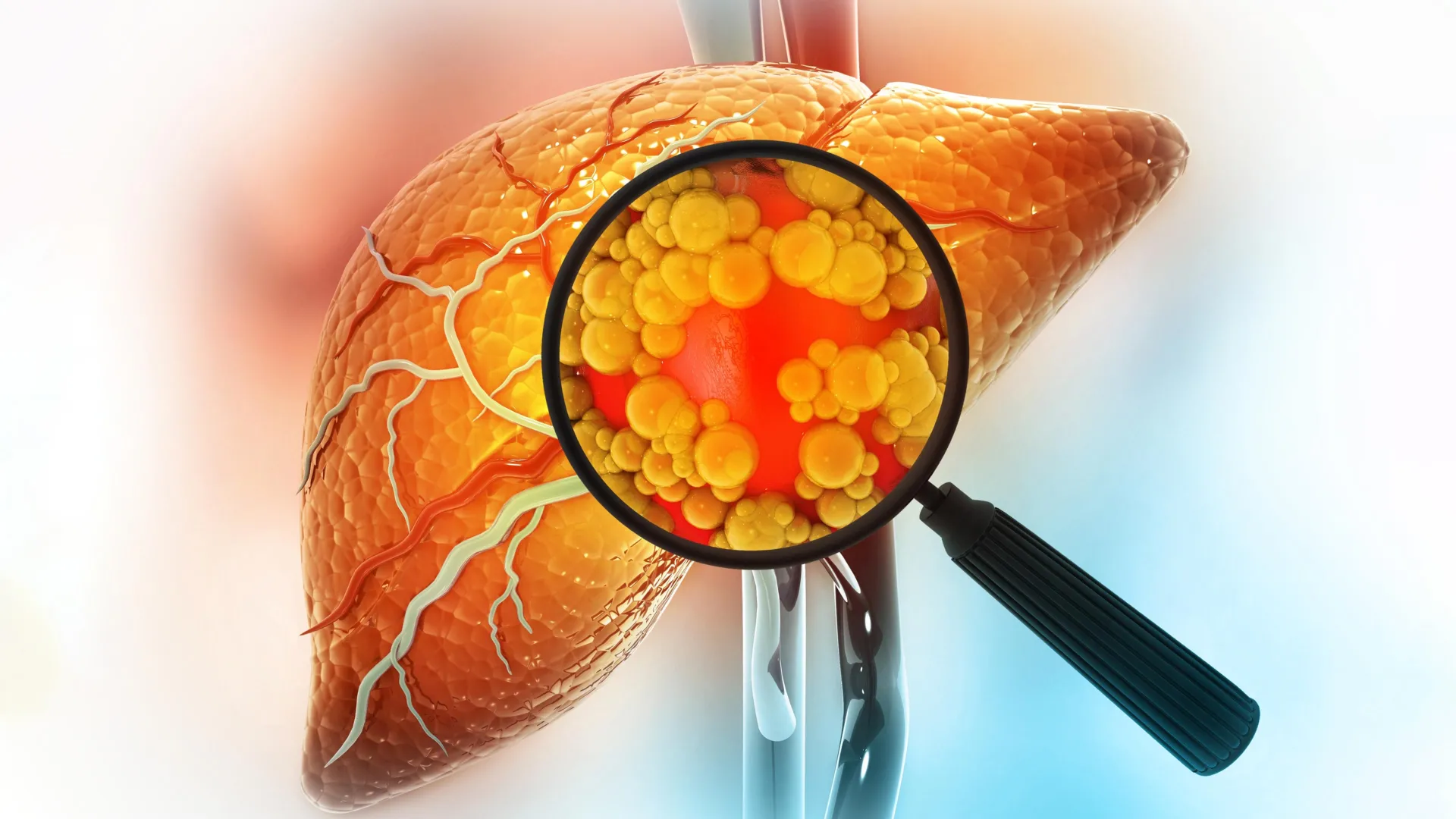Surprising study reveals what really kills fatty liver disease patients
Scientists uncover a surprising trio of killers driving deaths in the world’s most common liver disease.
- Date:
- October 4, 2025
- Source:
- University of Southern California - Health Sciences
- Summary:
- Metabolic dysfunction-associated steatotic liver disease (MASLD) affects over a third of the global population and is linked to serious health problems. A new study has revealed that high blood pressure, diabetes, and low HDL cholesterol are the deadliest cardiometabolic risk factors for patients with MASLD, with high blood pressure proving to be even riskier than diabetes. The findings also show that obesity and body mass index significantly influence mortality, and that each additional risk factor compounds the danger.
- Share:

More than one-third of the global population is living with metabolic dysfunction-associated steatotic liver disease (MASLD), the world's most common form of chronic liver disease.
MASLD develops when excess fat accumulates in the liver and is linked to one or more of five major health conditions: obesity, Type 2 diabetes, high blood pressure, high blood sugar, and low levels of HDL, or "good," cholesterol. These issues are known as cardiometabolic risk factors because they directly affect both heart function and metabolism.
Although MASLD can lead to serious complications such as liver failure, heart disease, and kidney problems, scientists have only recently begun exploring which specific risk factors most strongly predict death in affected patients.
Study Highlights the Most Dangerous Risk Factors
A new study from Keck Medicine of USC, published in Clinical Gastroenterology and Hepatology, has pinpointed the three cardiometabolic conditions most closely tied to death among people with MASLD: high blood pressure, pre-diabetes or Type 2 diabetes, and low HDL cholesterol. According to the findings, these raise the risk of death by 40%, 25%, and 15%, respectively.
These associations remained consistent regardless of the number or combination of risk factors a person had, and were unaffected by age, gender, race, or ethnicity.
"MASLD is a complicated disease, and this study sheds new light on where doctors may want to focus their efforts when treating patients," said Norah A. Terrault, MD, a hepatologist with Keck Medicine and a senior author of the study. "Knowing which aspects of MASLD might lead to poorer outcomes can help us offer patients the best possible care."
High Blood Pressure Takes the Lead as Top Threat
One of the most surprising discoveries was that high blood pressure appeared to pose a greater risk of death than diabetes. "Until now, it was commonly thought that diabetes was the most pressing health problem for MASLD patients, which is a key insight," said Matthew Dukewich, MD, PharmD, MS, a USC transplant hepatology fellow and the study's lead author.
The researchers also confirmed that obesity -- the most widespread cardiometabolic risk factor among those with MASLD -- significantly raises the likelihood of death. The effect depends on body mass index (BMI), a measure of body fat based on height and weight. Higher BMI values were directly associated with increased mortality risk.
The study also supports growing evidence that people with more than one cardiometabolic condition tend to have worse outcomes. For every additional risk factor present, the chance of death increased by roughly 15%.
To reach these conclusions, the Keck Medicine team analyzed data from the National Health and Nutrition Examination Survey (NHANES), which compiled health information from U.S. children and adults between 1988 and 2018. Of the 134,515 participants aged 20 and older, about 21,000 met the criteria for MASLD.
By tracking all-cause mortality rates in relation to each cardiometabolic condition, researchers were able to isolate which factors most strongly influenced death rates.
Looking Ahead: Unraveling More of MASLD's Mysteries
The researchers plan to expand their work by studying how genetics, diet, and alcohol consumption affect MASLD outcomes. "The more we can understand about the drivers of the disease, the more we can identify those most in need of interventions and prioritize our resources for enhanced outcomes," said Terrault.
Liyun Yuan, MD, a transplant hepatologist with Keck Medicine, also contributed to the study.
Story Source:
Materials provided by University of Southern California - Health Sciences. Note: Content may be edited for style and length.
Journal Reference:
- Matthew Dukewich, Jennifer L. Dodge, Liyun Yuan, Norah A. Terrault. Differential Effects of Cardiometabolic Risk Factors on All-Cause Mortality in US Adults with Metabolic Dysfunction-Associated Steatotic Liver Disease (MASLD). Clinical Gastroenterology and Hepatology, 2025; DOI: 10.1016/j.cgh.2025.09.003
Cite This Page: